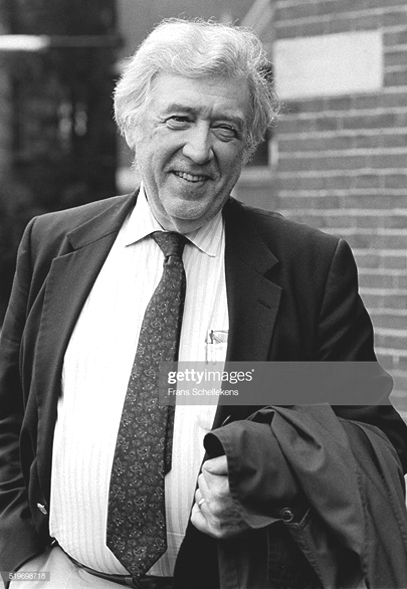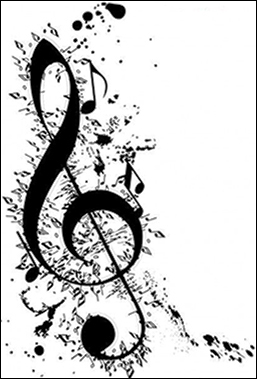Lonely Woman
Ornette Coleman (saxo alto), Don Cherry (corneta), Charlie Haden (contrabajo) y Billy Higgins (batería). Extraído del álbum The Shape of Jazz to Come (1959).
La atonalidad en el jazz apareció mucho antes que el free jazz. A finales de los años cuarenta Lennie Tristano ya había utilizado técnicas libres en sus temas «Descent into the Maelstrom», «Digression» e «Intuition». En 1948, la banda de Stan Kenton grabó su gran obra City of Glass, en la que desafía las técnicas armónicas y melódicas del jazz. Lo mismo ocurre con «Fugue» de Jimmy Giuffre de 1953. Los compositores clásicos también utilizaron métodos vanguardistas con la instrumentación del jazz, como en el Concierto de ébano de 1946 de Stravinsky o en All Set de 1957 de Milton Babbitt. Este último año Gunter Schuller llamó «third stream» a esta mezcla de las corrientes más progresistas del jazz con la música clásica contemporánea.
Atonality in jazz appeared long before free jazz. In the late 1940s Lennie Tristano had already used free techniques in his themes “Descent into the Maelstrom”, “Digression” and “Intuition”. In 1948, Stan Kenton’s band recorded his great work City of Glass, in which it challenges the harmonic and melodic techniques of jazz. The same goes for Jimmy Giuffre’s “Fugue” from 1953. Classical composers also used avant-garde methods with jazz instrumentation, as in Stravinsky’s Ebony Concerto from 1946 or Milton Babbitt’s All Set from 1957. This last year, Gunter Schuller named this mix of the most progressive jazz trends with contemporary classical music “third stream”.

Sin embargo, el verdadero comienzo del free jazz se produjo con las primeras grabaciones del saxofonista alto Ornette Coleman, sobre todo a partir de su traslado a Nueva York en 1959 y su contrato con Atlantic Records. En los álbums The Shape of Jazz to Come y Change of the Century comenzó a examinar las posibilidades de la improvisación atonal. Sin embargo, su trabajo más importante fue Free Jazz: A Collective Improvisation (1961), en el que participó un doble cuarteto e introdujo una cualidad más agresiva y cacofónica a su música. Por su parte, el pianista de formación clásica Cecil Taylor, cuyas influencias fueron Thelonious Monk y Horace Silver, también estaba interesado en el free jazz. Esto lo condujo a grabar Unit Structures en 1966, cuyos temas estaban compuestos sin partituras anotadas, métrica del jazz convencional ni progresiones armónicas. El saxofonista tenor Albert Ayler también estableció los fundamentos del free jazz junto con Coleman y Taylor. Condujo el lenguaje del jazz a sus límites máximos centrándose en la improvisación microtonal y haciendo graznidos y aullidos con su instrumento para producir efectos multifónicos. Sus composiciones presentaban melodías simples que recordaban a la música folclórica, pero las exploraba a través de su estilo vanguardista. Su álbum más importante fue Spiritual Unity (1965).
However, the real beginning of free jazz came with the first recordings of alto saxofonist Ornette Coleman, especially since his move to New York in 1959 and his contract with Atlantic Records. In the albums The Shape of Jazz to Come and Change of the Century he began to examine the possibilities of atonal improvisation. However, his most important work was Free Jazz: A Collective Improvisation (1961), in which a double quartet participated and introduced a more aggressive and cacophonous quality to his music. On the other hand, classically trained pianist Cecil Taylor, whose influences were Thelonious Monk and Horace Silver, was also interested in free jazz. This led him to record Unit Structures in 1966, whose tracks were composed without notated scores, conventional jazz meter or harmonic progressions. Tenor saxofonist Albert Ayler also established the foundations of free jazz along with Coleman and Taylor. He brought the jazz language to its maximum limits by focusing on microtonal improvisation and making squawks and howls with his instrument to produce multiphonic effects. His compositions presented simple melodies that reminded folk music, but he explored them through his avant-garde style. His most important album was Spiritual Unity (1965).

El trabajo de estos tres músicos influyó en otros, como el saxofonista tenor John Coltrane, que tocaba en el ámbito del post-bop y el jazz modal, pero en 1965 grabó Ascension añadiendo a su cuarteto habitual seis instrumentistas de viento y un segundo contrabajista. En la única larga composición de que consta el álbum se intercambian improvisaciones solistas libres con secciones de improvisación colectiva, y en sus siguientes álbums continuó tocando free jazz. El teclista Sun Ra también se adhirió a este estilo grabando The Heliocentric Worlds of Sun Ra y The Magic City en 1965. En estos trabajos puso el timbre y la textura por encima de la métrica y la armonía, y utilizó una amplia variedad de instrumentos electrónicos e innovadores instrumentos de percusión.
The work of these three musicians influenced others, such as tenor saxofonist John Coltrane, who played in the field of post-bop and modal jazz, but in 1965 recorded Ascension adding six wind players and a second bassist to his regular quartet. In the only long composition of the album, free solo improvisations are exchanged with passages of collective improvisation, and on his next albums he continued to play free jazz. Keyboardist Sun Ra also adhered to this style by recording The Heliocentric Worlds of Sun Ra and The Magic City in 1965. In these works he placed timbre and texture above meter and harmony, and used a broad variety of electronic and innovative percussive instruments.

Translated with the help of DeepL

Focus on Sanity
Ornette Coleman (saxo alto), Don Cherry (corneta), Charlie Haden (contrabajo) y Billy Higgins (batería). Extraído del álbum The Shape of Jazz to Come (1959).
Primero Higgins hace un redoble, luego entran Coleman y Haden, y finalmente se queda este último tocando solo unas extrañas notas. Al cabo de un rato vuelve Higgins y Haden presenta un discurso sugerente y expresivo con soltura y muy buenas ideas. De repente aparecen Coleman y Cherry tocando un riff, y a continuación Coleman comienza a tocar con gran rapidez un solo trepidante e impetuoso sin contemplaciones añadiendo gorgoritos. Luego Coleman y Cherry vuelven a tocar el riff, y este último interpreta una línea melódica más calmada, aunque de vez en cuando aumenta su intensidad. Después Coleman y Cherry repite el riff para dar paso a Higgins, que golpea los tambores de forma firme y vigorosa, y la composición termina con el famoso riff.
First Higgins makes a drumroll, then Coleman and Haden come in, and finally the latter is left playing alone strange notes. After a while Higgins reappears and Haden presents a suggestive and expressive speech with ease and very good ideas. Suddenly Coleman and Cherry appear playing a riff, and then Coleman begins to play a fast-paced and impetuous solo without contemplation adding gurgles. Next Coleman and Cherry play the riff again and the latter interprets a calmer melodic line, although increasing occasionally its intensity. After that Coleman and Cherry repeat the riff to give way to Higgins, who strikes the drums firmly and vigorously, and the composition ends with the notorious riff.


